DevOps For Testers: 10 Leading Test Automation Tools for a Successful DevOps Test Strategy

DevOps testing uses automated tests to support rapid software delivery while maintaining UX. Many software companies stay competitive by implementing DevOps testing practices and tools for better scalability and faster defect resolution throughout the software lifecycle.
At Instatus, we know how vital it is for DevOps teams to catch bugs and incidents early with reliable, automated testing and monitoring tools. That’s why we’ve made sure our status pages integrate with the tools you already use and automatically keep you in the loop.
In this guide to DevOps testing, we’ll discuss benefits and best practices before offering ten state-of-the-art automation tools for DevOps testing success.
Ready? Let’s get started.
What Is DevOps Testing?
DevOps testing automates and streamlines the entire software delivery lifecycle. Its purpose is an efficient collaboration between the development, operations, and test teams to ensure adequate testing and find problems faster and earlier in development.
Incorporating testing into every stage of an Agile Continuous Integration and Continuous Development (CI/CD) pipeline is a critical component of a DevOps test strategy.

What Are the Benefits of DevOps Testing?
Reduces test execution time
Since tests are automated, the time your team needs to spend testing is significantly reduced. DevOps uses systematic testing to allow teams to keep up with the speed of Agile and DevOps workflows. The effort needed to obtain accurate test results and maintain tests is also significantly reduced, along with the occurrence of false positives.
Defects are exposed early
Downtime and rollbacks due to bugs can be expensive. And the later a bug is found in development, the more expensive it is to fix. A National Institute of Standard Technology study and IBM report found that once a bug reaches the production phase, it takes 3 times as long and costs 100 times more to fix.
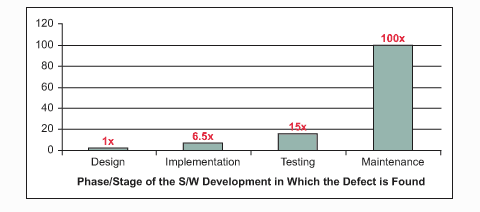
DevOps testing is necessary to enhance risk management, as potential issues are detected early. This shift-left testing approach means the testers and developers collaborate from the onset of development.
Testers are involved in the design and development stages when bugs are cheaper to fix. And developers can execute unit tests for a higher chance of mitigating problems before they occur or grow in complexity later in the life cycle.
Creates high-quality software delivery
Continuous testing is crucial for delivering high-quality software continuously, which helps businesses stay competitive. The success of a DevOps testing strategy depends on the practices you implement and the automated test tools you use—but more on those later!
DevOps Testing Best Practices
Automate testing where possible
Due to the constant stream of app updates that comes along with CI/CD, it’s important to automate a sizable proportion of your tests. This includes unit, component, acceptance, and integration tests. Consider using the test automation pyramid to guide your DevOps testing plan.
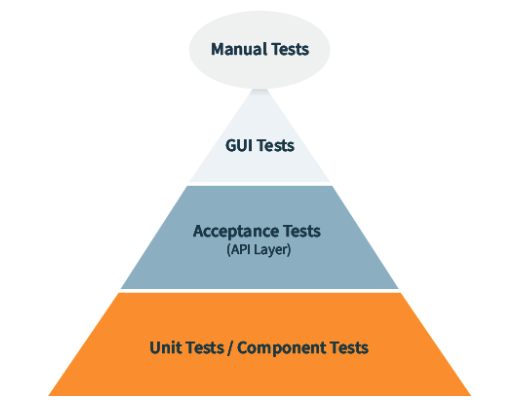
The benefits of more automated tests for continuous testing include the following:
- Changes can be tested immediately and automatically
- It's handy in evaluating extensive regression testing
- It helps minimize the number of defects and bugs reaching production
- It supports quicker software releases due to faster feedback on CI code quality
Track testing performance using metrics
Using metrics to measure the success or failure of testing offers insight into how changes impact the business, highlights areas that are highly vulnerable to failures, helps with release planning, and more.
Some valuable metrics to track include:
- Number of bugs found
- Ratio of failed to passed test cases
- Frequency of failing tests
Maintain accurate documentation
Maintaining accurate documentation creates an organized and transparent testing process.
High-quality management plans, test plans, and reports are necessary for successful DevOps testing. Test plan documents offer a comprehensive overview of all planned tests, while test reports provide a thorough understanding of the test results.
Plus, well-maintained, standardized, and easily accessible documentation can be referenced by newbies to quickly get up to speed.
Select the right tools
Choosing the right automation testing tool is crucial for a successful DevOps tools ecosystem. The tool you pick influences how quickly your organization delivers quality software and services.
It's unrealistic to find one tool that meets all of your test automation requirements. However, here are some ideas to consider when choosing the best tool for your team:
- Type of tool: Is it an open-source or commercial tool? For example, open-source tools typically require programming skills. Consider the language, framework, and whether it's for developers or testers; specific skills and expertise may be necessary.
- Licensing and support costs: This includes training, software updates, and maintenance. Does the price include technical support? Answers to such questions will help with budgeting.
- CI and DevOps integration: Tools without CI and DevOps workflow support will not be effective when speed is the objective.
- Type of test reports: Insightful and informative test reports provide numerous benefits, including understanding and tracking issues between releases and a historical data trail.
**10 Best Tool for DevOps Test Automation **
Here are ten of the best test automation tools for seamless integration with your DevOps workflow.
1. Avo Assure - for 100% no code scripts

Avo Assure offers over 90% test automation for heterogeneous coverage, and assists in end-to-end (E2E) test execution without requiring code. It auto-generates tests for multiple platform compatibility. You can test your offerings across platforms, including mobile, desktop, web, ERP apps, mainframes, emulators, and more.
2. Kobiton – for mobile-first testing
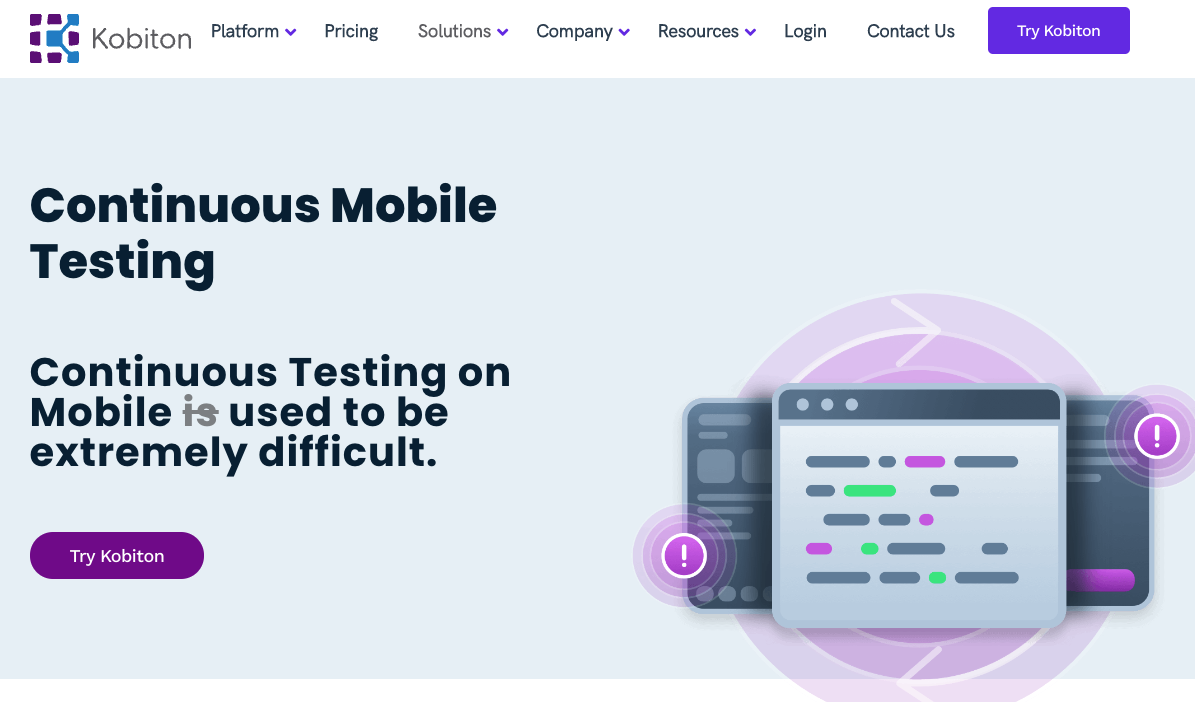
Kobiton is a mobile-first test platform for scriptless, continuous mobile testing. Its best features include real-device manual and automated testing for accurate UX results. It offers plug-and-play DevOps seamless integration with popular CI/CD platforms.
In addition, your test teams can perform testing on real mobile devices.
3. QF-Test – for Java and web apps

QF-Test specializes in GUI test automation for many programming languages, apps, plugins, programs, and file types, including Java/Swing, RCP, and Eclipse. In addition, you can cross-browser test static and dynamic web applications for many frameworks like HTML, AJAX, and PrimeFaces.
It offers easy-to-understand logs for bug analysis and is suitable for experts and newbies. It supports the QF-Test learning curve through tutorials, videos, and examples.
4. Mocha – for asynchronous testing
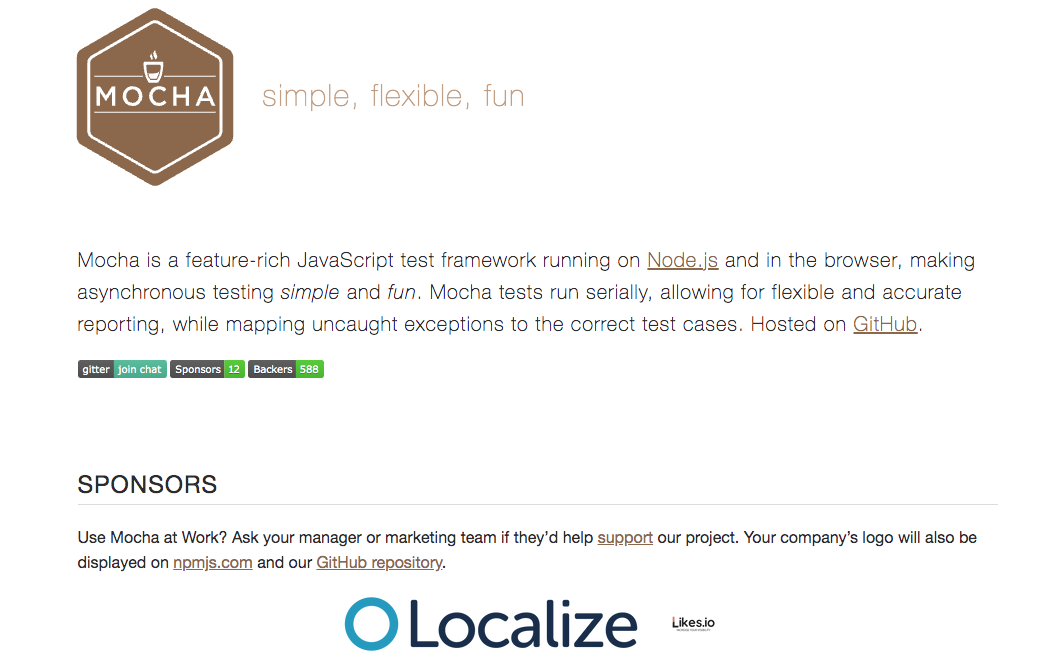
Mocha is an open-source and feature-rich JavaScript test framework. Hosted on GitHub, it runs on Node.js and in the browser for simple asynchronous test execution alongside other tasks. It offers accurate and comprehensive reporting, including uncaught exception mapping to corresponding test cases.
5. Selenium – for cross-browser web testing
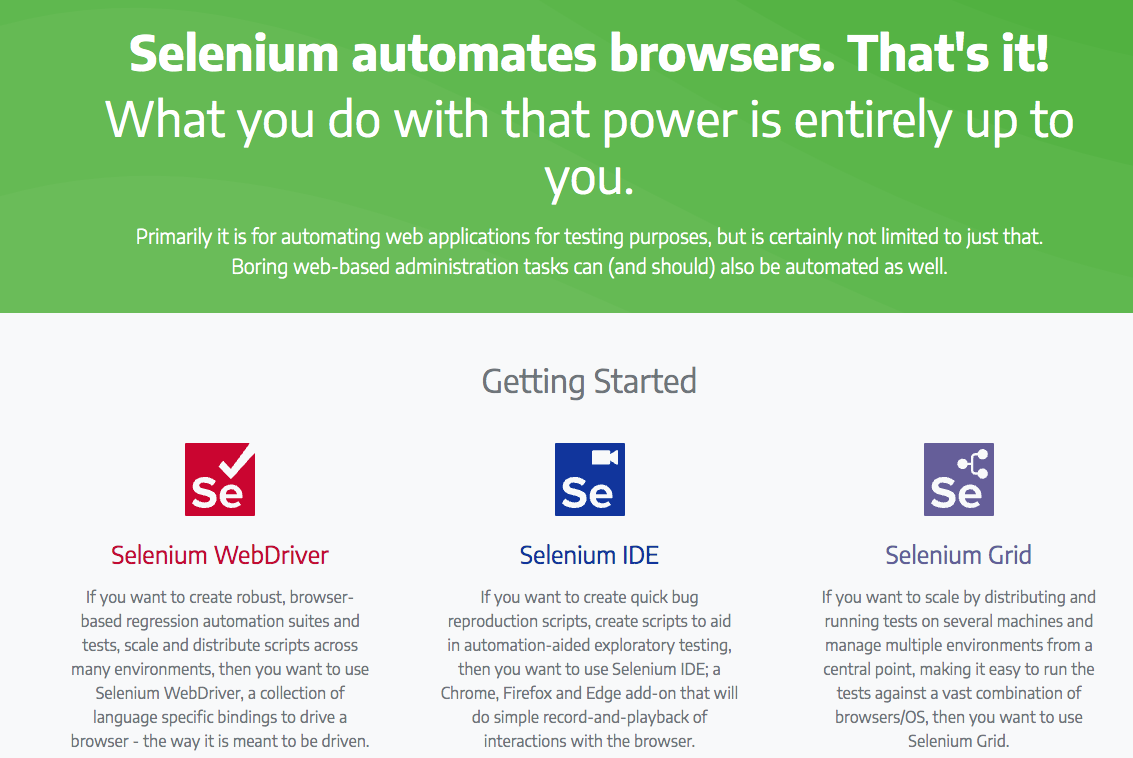
Selenium is also open-source and one of the most popular test automation tools. It's ideal for cross-browser-web-based regression testing across different environments and devices.
Its main features include parallel test execution for quicker test cycle completion; and rapid bug recreation scripts. In addition, you can distribute and run scripts on multiple machines and manage several environments centrally for easy browser and OS combinations testing.
6. TestSigma – for beginners and experts
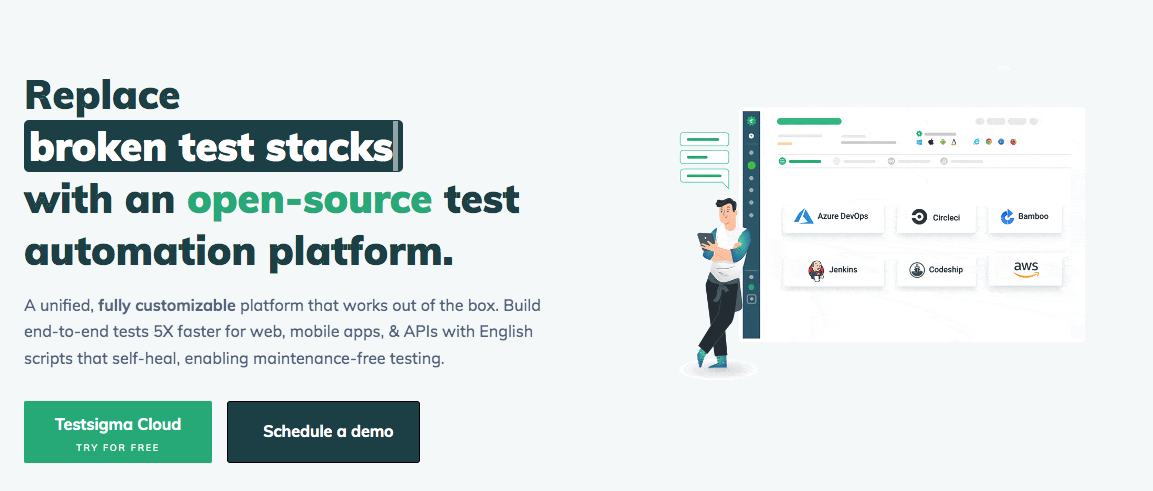
TestSigma is relatively new to the test automation tool space; however, its offerings make up for its newness. It eliminates test automation complexity by defining and automating tests using simple language. And provides E2E assessment for web and mobile apps and APIs.
It leverages AI for faster test execution and script maintenance, and even helps troubleshoot failed tests.
7. Apache JMeter - for load and performance testing

Apache JMeter is for automated load testing and measuring performance on static and dynamic resources and dynamic web apps. It's an open-source tool for traditional web protocols, including HTML. It can stimulate various load types for performance analysis on environments such as individual and group servers, networks, or objects.
8. Tosca – for reusability and scalability
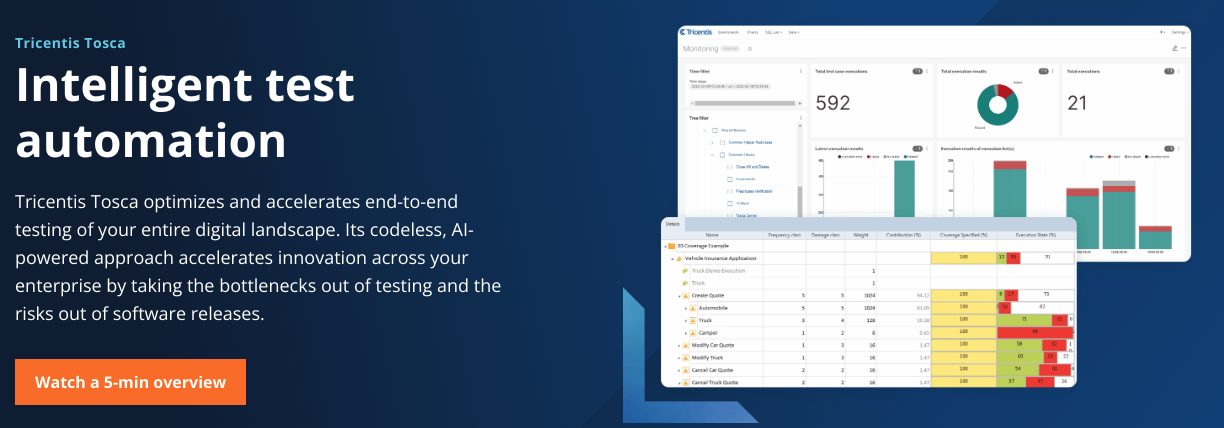
Tricentis Tosca is a model-based test automation tool and uses minimal steps to automatically scan and load AUT (Automated Ultrasonic Testing) straight into the software. Using AI-powered engines, the tool suggests the most efficient test cases to enhance reusability and scalability.
It supports over 160 technologies and plugins to integrate seamlessly into your DevOps strategy.
9. Functionize - for low-code test automation

Functionize is a low-code testing solution powered by AI. Its Natural Language Processing feature converts tests into English, removing the requirement for technical know-how. It will update your tests to match the changes to your UI.
Its top features include assistance in understanding test failures with one-click SmartFix suggestions. And cloud-based E2E tests that “self-heal” and run at scale. Functionize uses a big data approach for more stable tests.
10. Docker - for secure remote testing

Docker is a popular tool among developers. It uses lightweight containers instead of dedicated servers to allow several Docker environments to run concurrently. This reduces testing conflicts and creates secure and portable test environments. Docker offers access to containers and the ability to execute apps remotely, reducing infrastructure costs and streamlining configuration management.
Use Instatus to Support Rapid Software Delivery
There's no need to wait until development finishes to start testing—DevOps testing uses automated tests to support clean, bug-free CI/CD.
Instatus's beautiful and easy-to-understand service status pages will handle the monitoring side of your DevOps workflow. They offer the data your teams need to maintain excellent UX by quickly addressing issues caused by changes and outages.
In addition, our status pages enhance customer experience by keeping them in the loop with clear and open communication when incidents arise. This significantly reduces tickets, allowing your teams to focus on resolving issues.
Get started with a free status page and start keeping your customers in the loop!
Get ready for downtime
Monitor your services
Fix incidents with your team
Share your status with customers

